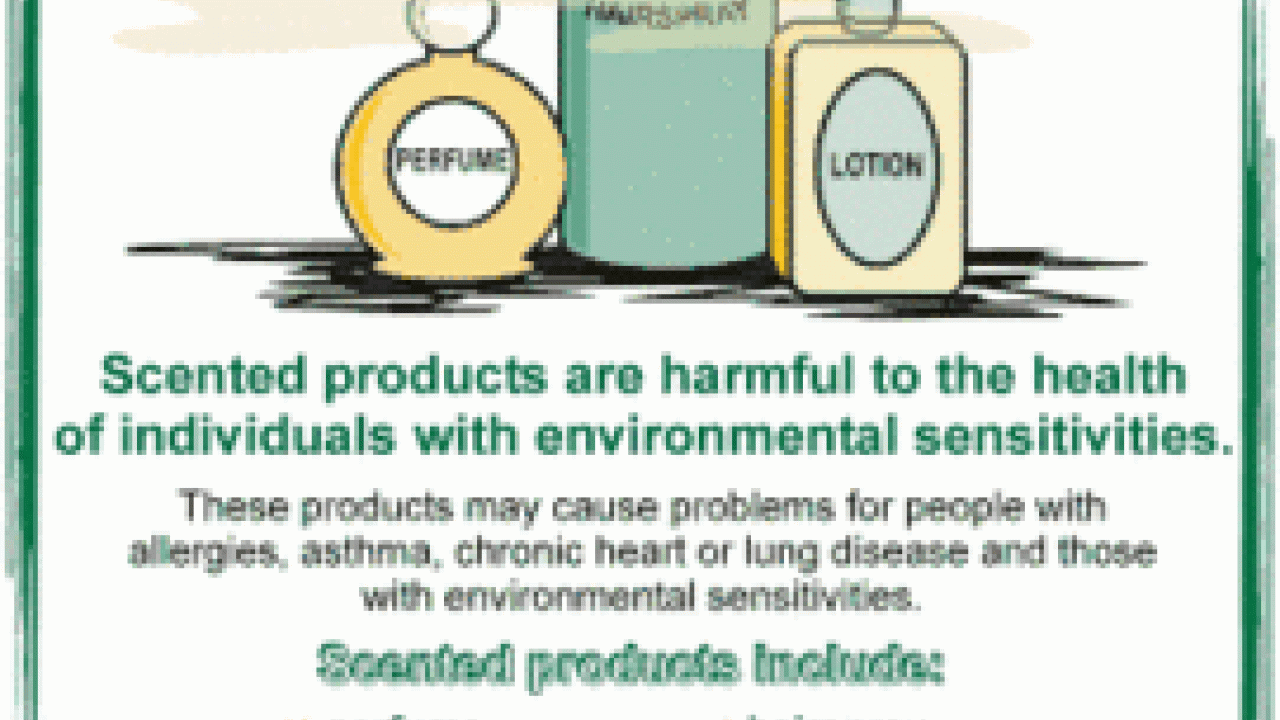
Several schools and institutions are instituting fragrance-free policies to reduce unnecessary incidence of migraines and respiratory irritation. Yep. Those fancy, sweet smelling fragrances that can cost 50 bucks a bottle contain volatile organic chemicals (VOCs) which contribute to poor indoor air quality and can trigger headaches; eye, nose, and throat irritation, and nausea. Fragrances may also contain certain phthalates, suspected of disrupting hormones and linked to reproductive problems.
“But the fragrances I use are subtle. They couldn’t harm or annoy anyone.”
According to an article published in Flavour and Fragrance Journal you may not be the best judge of what is “subtle”:
The sense of smell can detect very low concentrations of odorants. However, it cannot detect the same odor at the same concentration for an extended period of time.Those that use scented products on a regular basis may not be able to detect their own fragrance shortly after applying it. They may apply increasing amounts or reapply frequently so that they can smell the fragrance. In many instances they are totally oblivious that their fragrance is often overwhelming and intrusive to others.
There are over 5,000 different chemicals used in making fragrances, and any given fragrance may have as many as 600 different chemical ingredients. Yet only a fraction of those chemicals have been tested for their health effects.
Thanks, but no thanks, Esté Lauder--I'd rather not be your guinea pig!
Useful Link: What steps should I take when implementing a scent-free policy in the workplace?



